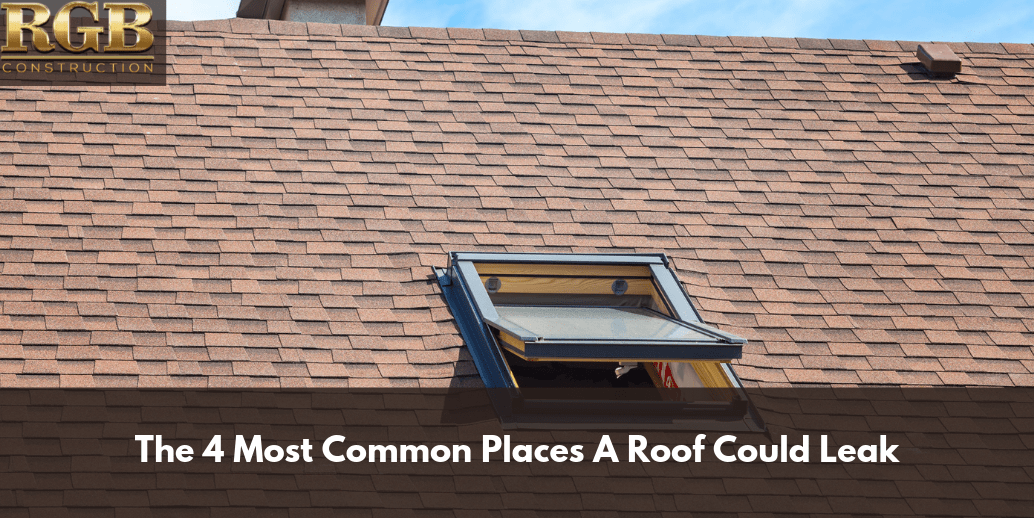We would love to assume that every homeowner knows the true extent of their roof’s importance. It seems like a given once you’re aware, but sadly, if you look around these days, you see a lot of damaged or at least ugly, poorly-maintained roofs.
It all comes down to economic conditions really, people are trying to be wise and responsible, and save money on their home wherever they can. This kind of fastidious frugality is to be admired honestly, but not at the cost of your roof.
Your roof is your first and last defense against the elements. The weather is always trying to destroy your home, especially water damage. Did you know that a bad roof can impact your resale value, your curb appeal, and even your homeowner’s insurance? Well, it very much can, and in a very negative way.
Water damage is probably the worst possible roof problem you can have, and a leaky roof is a sign that something has gone quite wrong. Once water gets in, it will cultivate bacteria and fungi (specifically molds, some of which are actually toxic). It will cause your structure to weaken, your ceilings and walls to rot, and ruin everything you have in your home.
You don’t want a leaky roof, and the best thing to do is to be proactive. How can you do that, though, if you’re not a roofing expert? Well, that’s what we’re here to help you with today.
Let’s look at the four places your roof is most likely to develop leaks. Bear in mind, a leak could form anywhere under the right conditions; these are the easiest and most immediate places where they can and eventually will form.
#1 – Gutters
Wait, what? Aren’t gutters’ sole purpose to keep water off your roof, and disperse it safely and tidily? They sure are, but they also clog, and the fringes of the roof can develop leaks as water builds up and erodes the shingles and seal.
Regularly cleaning your gutters, and maintaining them properly, is a very good idea. If you see a problem developing with your gutters on a structural level, have a professional work on it, don’t try it yourself. It’s dangerous, and if you repair/install it wrong, problems will become much worse.
Gutters aren’t the prime candidate, the next one is, but so few people tend to expect problems here, that we felt it was important to illustrate this one first.
#2 – Skylights
Skylights can be nice if you’re into natural light in your home (yes, some people actually hate sunlight). However, the seal around them isn’t immortal, especially in places with fluctuating temperatures.
As things heat up, they swell, and as they chill, they contract. This is called thermal expansion, and it’ll gradually destroy most things, even glass, and metal. The seal around a skylight is much more fragile than glass nor metal, though. Thus, after a few years, it’ll start to come away from the surface, shrivel up, or crack. Water will get in, and pool under the roof.
It may take a while for a leak to appear, depending on various factors. Thus, it’s a good idea to have these checked out every so often by a professional, and maintenance done on them to keep that seal in place. Fixing a leak will mean a lot more damage to repair and higher costs.
#3 – Flashing
What’s flashing? It’s the lip where second stories, chimneys, vents, and other things interrupt the surface of a roof. This has similar problems to a skylight, as weather, wind, and temperatures can cause them to warp and wear down.
Once more, water will pull under the roof and in the ceiling, eventually forming a leak. This, along with our next and final point, are why you should have your roof inspected annually, if not semiannually. The more often you can feasibly have a roof looked at by a trained professional, the better, and the fewer problems you will have; the more money you will save in the long run.
#4 – Shingles
This is the one you probably expected, and yes, leaks will develop as shingles begin to degrade or are lost. The holes made for nails or staples are just inviting water in, and the seams between under layers aren’t quite watertight either (though a well-built roof will usually be as close to this as possible).
The thing is, shingles aren’t designed to last forever, it just doesn’t work that way. Over time, they will lose their granules, their integrity, and their shape. They will warp, buckle or crack. They will be lost to the weather as well.
If you have bad shingles, it’s time for roof repairs or, if it’s bad enough, roof replacement, simple as that.
Are you concerned about the state of these things, or is your roof leaking? Have you noticed signs that these could be eventualities? Is your roof in bad need of repairs, or just too damaged or old to salvage? Fill out our contact form today, and let RGB Construction get your roof back to ship shape in no time flat.







